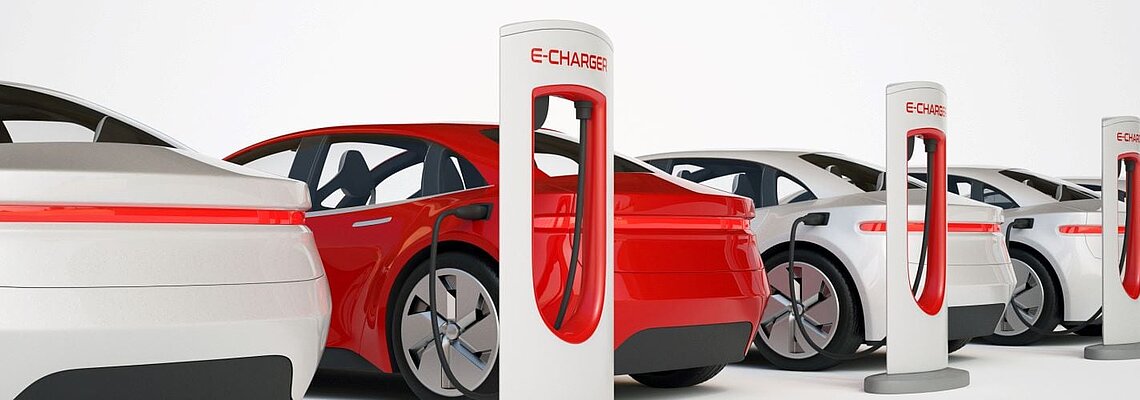
The charge current interrupting device (CCID) is a safety feature that is implemented in electric vehicle (EV) charging stations (EVSE) to prevent shock, electrical fires, and damage to personnel and vehicles during charging. The CCID is designed to interrupt the flow of current in the charging cable if it detects abnormal conditions such as a ground fault or leakage current. The CCID is analogous to the ground fault circuit interrupter (GFCI) used for electrical shock protection in residential and industrial applications. In a way, the functions are almost identical, but the mere nomenclature was changed to reflect an application related to charging.
How Does a CCID Work?
A CCID is essentially a smart switch that monitors the flow of current in the charging cable. When the CCID detects a fault, it interrupts the flow of current in the charging cable, thus preventing any further damage. The CCID is typically installed as a part of the charging station's interior controls.
CCIDs in EV Charging Stations
EV AC charging stations typically use two types, or levels, of power: Type 1 and Type 2. Type 1 usually refers to the small onboard emergency plug in cable that typically has very low power levels, around 1KWh. Level 2 are usually rated higher and represent wallboxes that can be mounted in a garage, up to more commercial versions that might be found in front of a hotel. In both cases, the CCID is integrated into the controller to ensure the safety of the charging process.
When a vehicle is plugged into a charging station, the controller first checks for the presence of the vehicle and verifies that it is compatible with the charging station. Once the charging process begins, the CCID continuously monitors the flow of current in the cable. If the CCID detects any abnormalities such as a ground fault, it immediately interrupts the flow of current to prevent any further damage.
The CCID is an essential safety feature in EV charging stations that helps to prevent electrical fires and damage to vehicles. It is important to note that the CCID is not a substitute for proper maintenance and installation of an EV charging station. It is essential that EV charging stations are installed and maintained by qualified professionals to ensure the safety of the charging process.
Why are CCIDs Necessary?
CCIDs are a vital safety feature in EV charging stations. These devices prevent electrical fires and damage to vehicles during charging, as well as prevent personnel from hazardous electrical situations. As mentioned, the CCID can be described as a smart switch that monitors the flow of current in the charging cable and interrupts the flow of current if it detects any abnormalities.
It is important to note that a CCID, it’s design, performance and functionality are governed by Underwriters Laboratories (UL), which is a nationally recognized testing laboratory (NRTL). The standard governing CCIDs is UL 2231.
Bender has been involved in the manufacturing of CCIDs for electric vehicle safety equipment (EVSE) for the last decade. To adhere to the UL standards is a must for these devices, but this costs serious time and effort to go through the lengthy testing cycles that UL requires.
 CCIDs are a vital safety feature in EV charging stations. They help prevent electrical
CCIDs are a vital safety feature in EV charging stations. They help prevent electrical
fires and damage to vehicles, all while keeping users of all ages safe.
UL 2231: A Brief Overview
UL 2231 is a safety standard developed by UL for charge controllers and CCID devices used in EV charging stations. The standard was first introduced in 2014 to address safety concerns associated with charging electric vehicles.
The UL 2231 standard outlines specific safety requirements for CCID devices, including testing and performance criteria. The standard is intended to ensure that CCID devices used in EV charging stations are safe and reliable. UL 2231 is particularly relevant to CCID devices used in EV charging stations. CCID devices are a critical safety feature in EV charging stations, and the UL 2231 standard helps to ensure that these devices meet specific safety requirements.
It is important to note that a CCID like a GFCI triggers on fault currents that somehow manage to leak to ground. Here, two thresholds are possible. The more sensitive variant is a CCID5 which will trigger at 5mA of current. This is very similar to a typical bathroom GFCI that a homeowner in the USA might see next to sinks in bathrooms and kitchens. The next level up is the CCID20 which is triggers at 20mA of ground fault current, which is allowed when a secure safety grounding path is present. Notably there are slight differences between the USA and European requirements for these thresholds.
Conclusion
The UL 2231 standard outlines various safety tests and performance criteria that CCID devices must meet to be considered safe and reliable. These tests include short circuit protection, overcurrent protection, ground fault protection, and other safety measures.
By following the UL 2231 standard, manufacturers can ensure that their CCID devices meet specific safety requirements. Overall, the UL 2231 standard is an important step towards ensuring the safety and reliability of EV charging stations. Bender CCIDs are fully capable to fulfill the requirements for CCIDs in both, European and US based scenarios.
For more information about this application or to learn more about Bender technology related to your specific application, contact our team of experts.
This article is for informational purposes only. Bender provides the information "as is" without warranty and is not responsible for its accuracy or reliability. No warranties are given regarding its suitability for any specific circumstances.




